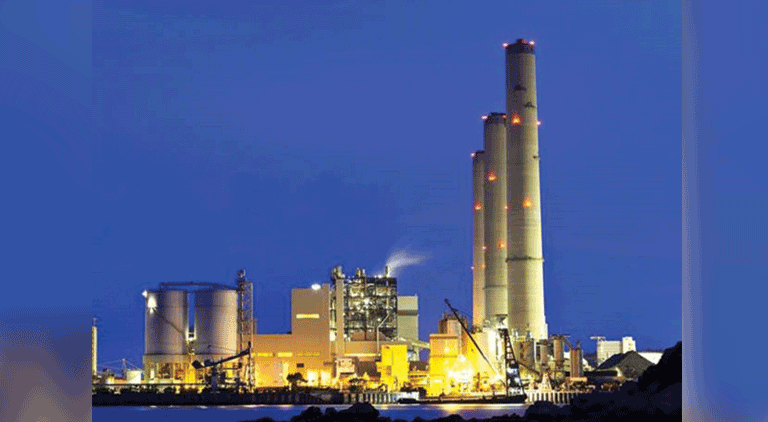Ramping up steam turbine manufacturing in light of rising power consumption
By EPR Magazine Editorial June 11, 2020 4:51 pm IST
By EPR Magazine Editorial June 11, 2020 4:51 pm IST

The steam turbine market for power generation is projected to grow at a good rate amidst growing industrial, commercial and residential power demand.
Steam turbines are popularly known for their use in thermal power stations for generating electricity. Various power plants came into existence when there was a lack of techniques to meet the exceeding power demands in both developing and developed countries in the past. Coal being the primary fuel used in these power plants’ performance has raised various ecological concerns across the world. The world has already started replacing coal-based power plants with cleaner energy options like renewable energy, among others.
Growth potential of steam turbine marketIn India, because of the availability of coal in abundance, coal-fired power generation is increasing in the country which is anticipated to boost the demand for steam turbines. Furthermore, steam cycle plants are easy to manage and operate and are very durable, which is expected to positively influence the growth of the Indian steam turbine market over the coming years. This growth can be attributed to the growing adoption of agro-based power generating systems and captive power plants coupled with rising focus to improve energy efficiency. It is anticipated that 1 MW to 120 MW steam turbines are expected to show lucrative growth owing to the rising demand for captive power systems. General Electric (GE) is introducing 660 GW and 800 GW supercritical steam turbines in India, while Siemens is investing $44.2 million in India to expand its steam turbine facility in Vadodara, Gujarat.
Challenges plaguing steam turbine players
Companies in the steam turbine market are taking steps to deal with the challenges that have arisen due to the spread of the COVID-19 pandemic. With many steam turbine generator sets being imported from China and elsewhere in the past few years, especially in the critical and supercritical categories above 350 MW, the earlier focus for Indian manufacturers was on reduction of the pricing of the steam turbines to make them competitive with predatory international costing in this capacity range.
Aditya Gandhi, Partner, Nitin Corporation says, “With reduction in orders for critical and supercritical categories in the private sector, due to emergence of other renewable sources, i.e., solar and wind-solar combination in this capacity range, the focus shifts back on obtaining orders and business from captive and cogeneration units in the capacity range of 1–120 MW. Due to significant ramp up in the domestic steam turbine manufacturing capacities, one challenge is the intense competition for obtaining orders by undercutting on the pricing.
Impact of closure of thermal plants on steam turbine sector owing to emission norms
The Central Pollution Control Board (CPCB) had set up new norms in 2015 for capping of nitrogen oxides (NOx), particulate matter (PM), and sulphur dioxide (SO2) emissions from thermal power plants in line with the Paris Agreement, in a phased manner up to 2022. This would require installation of Flue Gas Desulphurisation (FGD), Selective Catalytic Reduction (SCR), Electrostatic Precipitation (ESP) systems, etc. in the existing power plants, leading to an additional capex of around ₹3.91– 3.96 lakh crore.
While some plants are planning to incur this capex, it is anticipated that there would be a number of shutdowns of the older inefficient power plants, which were due for mothballing shortly, especially among the stateowned generation companies. Hence, it is anticipated that there would be an inflow of orders for setting up of new power plants in the critical and supercritical categories from these generation companies.
Market outlook
Increasing demand for uninterrupted power is a major driver of the steam turbine market that caters to power generation. The steam turbine market for power generation is projected to grow at a good rate amid growing industrial, commercial and residential activities. Thermal capacity addition is rising every year with constantly increasing electricity consumption. Growth in the renewable energy market, particularly in biomass, is another factor driving the demand for steam turbines. Increase in captive and cogeneration operations are expected to propel the growth of steam turbines for power generation further.
Though it is not possible to accurately predict the market in the coming year due to the coronavirus crisis and the immediate slowdown in capex due to this, it is anticipated that the demand cycle would be normalised within 8–10 months and the long-term growth would stay intact.
For more information, please contact:
Aditya Gandhi, Partner, Nitin Corporation
www.corponit.com
We use cookies to personalize your experience. By continuing to visit this website you agree to our Terms & Conditions, Privacy Policy and Cookie Policy.